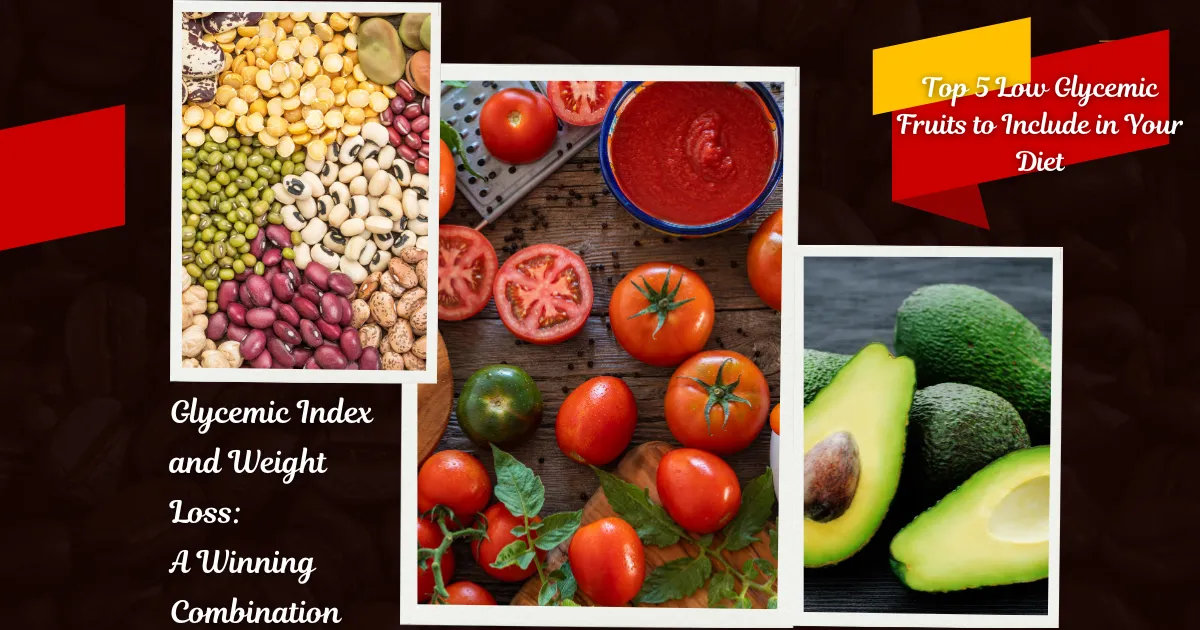A low glycemic index (GI) diet involves eating foods low in carbohydrates to help stabilize blood sugar levels. The benefits of a low GI diet include improved blood sugar control, increased energy levels, better weight management, and reduced risk of chronic diseases like diabetes and heart disease.
A Low Glycemic Index (Low GI) Diet is a powerful tool for improving health and well-being. By focusing on foods with a low glycemic index, you can enjoy various benefits contributing to a healthier lifestyle. Here’s a closer look at what a Low GI Diet can do for you, along with some easy meal ideas to get you started.
Benefits of a Low GI Diet
Stable Blood Sugar Levels: One of the most significant benefits of a low-GI diet is its ability to help stabilize blood sugar levels. Foods with a low glycemic index are digested and absorbed more slowly, leading to a gradual rise in blood sugar rather than a quick spike. This is particularly beneficial for individuals with diabetes or those looking to prevent blood sugar fluctuations.
Improved Energy Levels: Low-GI foods provide a steady release of energy throughout the day, helping to prevent the energy crashes often associated with high-GI foods. This sustained energy can enhance productivity and overall well-being.
Weight Management: Because low GI foods help you feel fuller for longer, they can aid in weight management by reducing hunger and preventing overeating. This makes it easier to stick to a healthy eating plan and achieve weight loss goals.
Better Heart Health: A low-GI diet is associated with improved heart health, as it can help lower cholesterol levels and reduce the risk of heart disease. By choosing low-GI foods, you’re making a heart-healthy choice that can benefit you in the long run.
Easy Meal Ideas for a Low GI Diet
Breakfast: Start your day with a bowl of steel-cut oats topped with fresh berries and a sprinkle of nuts. This fiber-rich meal will keep you satisfied and energized.
Lunch: Enjoy a quinoa salad with mixed greens, grilled chicken, and various colorful vegetables. Drizzle with olive oil and lemon juice for a delicious and nutritious meal.
Dinner: Choose grilled salmon fillet served with steamed broccoli and a side of sweet potato. This balanced meal is rich in nutrients and low in GI.
By incorporating these easy meal ideas into your routine, you can enjoy the many benefits of a Low GI Diet. It’s a simple yet effective way to support your health and maintain a balanced lifestyle.
Are you struggling to manage your diabetes through diet alone? Have you heard about the benefits of a low-glycemic index diet but aren’t sure where to start? If so, you’re in the right place. Embracing a low-glycemic index diet can be a game-changer for individuals with diabetes, helping to stabilize blood sugar levels and improve overall health.
Diabetes is a chronic disease that affects millions of Americans. If you or someone you love has diabetes, you already know how crucial it is to maintain a healthy diet. A diabetic meal plan should be designed around what you can consume.
You may need to reduce your intake of certain foods or increase your intake of others. Following a healthy eating pattern is essential for reasonable blood sugar control. Diabetics often struggle with their food choices because they don’t always know what foods are good for them.
A Diabetic meal plan should include protein, carbohydrates, fat, fiber, vitamins, minerals, and water. These nutrients are essential for maintaining your body’s health and strength. They also help prevent complications from developing.
The Glycemic Index Made Easy: Streamline Your Diabetic Meal Planning.
1. Protein is an essential macronutrient that helps build muscle mass and maintain bone density. A protein-rich diet may help reduce body fat levels and improve insulin sensitivity.
Rich foods (protein) include meat, poultry, fish, eggs, dairy products, beans, nuts, seeds, soybeans, tofu, and whole grains.
2. Fat is an essential macronutrient that provides calories and is a central storage depot for vitamins and minerals. Foods rich in fat offer essential fatty acids (EFAs) that the human body cannot synthesize.
EFAs play a role in maintaining normal brain function, hormone production, and cellular integrity. Sources of dietary fats include meats, oils, butter, cheese, milk, yogurt, and eggs.
3. Carbohydrates are the body’s primary fuel source. These complex molecules comprise carbon, hydrogen, oxygen, and nitrogen atoms. Sugars, starches, and fiber are examples of carbohydrate food groups.
Complex carbohydrates are digested slowly and release glucose into the bloodstream over time. Simple carbohydrates are broken down rapidly, giving rise to a quick spike in blood sugar. Simple carbohydrates include white bread, pasta, rice, crackers, cookies, cakes, candy, soda, fruit juice, and sugary drinks.
4. Fiber is a carbohydrate that does not break down easily in the digestive system. Instead, it passes through the gastrointestinal tract without being absorbed. Dietary fibers have been shown to lower cholesterol levels, prevent heart disease, and promote regular bowel movements. Familiar sources of dietary fiber include fruits, vegetables, legumes, nuts, seeds, and whole-grain cereals.
5. Water is necessary for many bodily processes, including digestion, elimination, and internal temperature regulation. Most people do not drink enough water each day. Adults should consume at least eight 8-ounce glasses of water per day. Children need even more water than adults due to their smaller size and higher metabolic rate.
Glycemic Index Calculator
Glycemic Index Chart - Calculator
Note: The glycemic index measures how quickly a food raises blood sugar levels. However, since these foods (Fish and seafood) contain minimal carbohydrates, they do not have a glycemic index value. The glycemic index only applies to foods that contain carbohydrates.
Fish Calories per Serving Calculator
The Healthy Fish Calorie Calculator is a great online tool to help you determine the nutritional value of different types of fish. It allows you to calculate the number of calories, fat, protein, and other nutrients in a serving size. It also includes information on which cooking methods are best for retaining nutrients. This calculator makes it easy to ensure you get the most nutrition out of your meals when opting for fish!
Share this:
- Click to share on Facebook (Opens in new window) Facebook
- Click to share on Pinterest (Opens in new window) Pinterest
- Click to share on LinkedIn (Opens in new window) LinkedIn
- Click to share on X (Opens in new window) X
- Click to share on Tumblr (Opens in new window) Tumblr
- Click to share on Bluesky (Opens in new window) Bluesky





Don’t forget about whole grains like quinoa and sweet potatoes! These complex carbohydrates provide sustained energy and have a lower impact on blood sugar levels compared to refined grains. Embrace the goodness of nature’s grains in your diabetic-friendly diet.
I read your article, and I think your way of writing has given me some innovative ideas, thank you very much.
There are many meal plans available for people with diabetes. A good diabetic meal plan should include complex carbohydrates, lean protein, and healthy fats
The low glycemic diet is indeed a dietary approach that focuses on consuming foods that have a lower impact on blood sugar levels. It can be particularly helpful for individuals looking to manage their blood sugar, improve insulin sensitivity, or support weight management.
Thanks for shedding light on the importance of understanding the GI Index, especially for those of us trying to manage diabetes or pre-diabetes.
Your article helped me a lot, is there any more related content? Thanks!